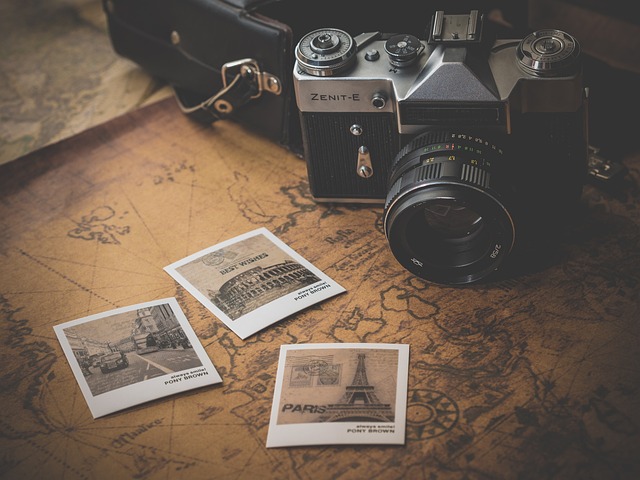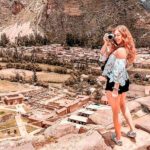
When it comes to photography, the lens you choose can make a profound difference in your images. While the camera body is important, the lens is often the true artist behind the shot. It influences how the image is captured, the perspective, and the mood of the photograph. Whether you’re a seasoned photographer or a beginner, understanding the impact of lens choice can elevate your photography game. Let’s explore how different lenses affect your images and how to select the right one for your needs.
Understanding Lens Basics
At its core, a lens is an optical device that focuses light onto the camera’s sensor. It consists of multiple glass elements arranged to control various aspects of the image, such as sharpness, distortion, and light transmission. Lenses come in different focal lengths, apertures, and types, each offering unique advantages and characteristics.
Focal Length and Perspective
The focal length of a lens, measured in millimeters (mm), plays a crucial role in determining the perspective and composition of your photos. Here’s a breakdown of how different focal lengths impact your images:
- Wide-Angle Lenses (e.g., 14mm to 35mm): Wide-angle lenses offer a broader field of view, making them ideal for capturing landscapes, architecture, and interior spaces. They allow you to get more of the scene in the frame, but they can also introduce distortion, especially at the edges. This can be advantageous for creating a sense of depth or emphasizing foreground elements.
- Standard Lenses (e.g., 35mm to 50mm): Standard lenses mimic the perspective of the human eye, providing a natural and balanced view of the scene. They are versatile and suitable for a range of subjects, including portraits, street photography, and general-purpose shooting. A 50mm lens, often referred to as a “nifty fifty,” is particularly popular for its sharpness and ability to create a pleasing background blur.
- Telephoto Lenses (e.g., 70mm to 300mm and beyond): Telephoto lenses have a longer focal length, allowing you to zoom in on distant subjects. They are perfect for wildlife, sports, and portrait photography where you need to isolate the subject from the background. Telephoto lenses compress the scene, making objects appear closer together and often enhancing the bokeh effect (the aesthetic quality of the out-of-focus areas).
Aperture and Depth of Field
The aperture of a lens, expressed as an f-number (e.g., f/2.8, f/4), controls the amount of light entering the camera and affects the depth of field (DoF) in your images. Depth of field refers to the range of sharpness in the photo, from the foreground to the background. Here’s how different apertures influence your shots:
- Wide Apertures (e.g., f/1.4, f/2.8): Lenses with wide apertures allow more light to hit the sensor, which is advantageous in low-light conditions. They also produce a shallow depth of field, creating a blurred background that isolates the subject and adds a professional touch to portraits and macro shots.
- Narrow Apertures (e.g., f/8, f/16): Lenses with narrower apertures let in less light but offer a greater depth of field. This is ideal for landscape photography, where you want both the foreground and background to be in sharp focus. However, be cautious of diffraction, which can reduce sharpness at very small apertures.
Lens Types and Their Effects
Different types of lenses serve specific purposes and offer various creative possibilities:
- Prime Lenses: Prime lenses have a fixed focal length, meaning they don’t zoom in or out. They are renowned for their sharpness, larger apertures, and generally lighter weight compared to zoom lenses. They encourage you to move around and compose your shot thoughtfully, which can improve your overall photography skills.
- Zoom Lenses: Zoom lenses offer flexibility by covering a range of focal lengths in one lens. They are convenient for dynamic shooting scenarios where you need to adjust your framing quickly, such as events or travel photography. Modern zoom lenses can deliver impressive image quality, though they may not match the sharpness of prime lenses at certain focal lengths.
- Macro Lenses: Macro lenses are designed for close-up photography, allowing you to capture fine details of small subjects like insects or flowers. They provide a high level of magnification and exceptional sharpness, making them indispensable for macro enthusiasts.
- Fish-Eye Lenses: Fish-eye lenses create a spherical, ultra-wide-angle view, often with a distinctive curvature. They are used for creative effects, capturing immersive landscapes, or adding a unique perspective to architectural shots. Their extreme wide-angle view can produce dramatic distortions that can be both challenging and rewarding to work with. If you are interested in learning more about movement photography, visit their page for further info.

Choosing the Right Lens for Your Needs
Selecting the right lens depends on your photographic goals and the subjects you enjoy capturing. Here are some considerations to help you choose:
- For Landscapes: A wide-angle lens with a narrow aperture is ideal for capturing expansive scenes with sharp details from foreground to background.
- For Portraits: A standard lens with a wide aperture will give you a pleasing depth of field, helping to isolate your subject and create beautiful background blur.
- For Wildlife or Sports: A telephoto lens with a long focal length will allow you to get close to distant subjects and capture fast-moving action with precision.
- For Close-Ups: A macro lens will enable you to explore the intricate details of small subjects with exceptional clarity.
Conclusion
The impact of lens choice on your photography cannot be overstated. Each lens type and focal length offers unique attributes that can significantly influence the outcome of your images. By understanding the characteristics of different lenses and how they affect perspective, depth of field, and overall image quality, you can make more informed decisions and enhance your photographic creativity. Experiment with various lenses, learn their strengths and limitations, and watch as your photography skills and portfolio flourish.
Written by Amy M. Cardenas
Like Us On Facebook








